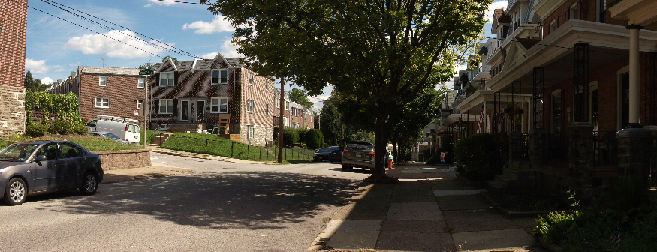or, why NPT and the Freedom Card need to be compatible
a working paper à la Nate Hood
"Organization before electronics before concrete" is an important German concept that refers to both a means of subdividing solutions and a philosophy for applying those subdivisions. The best solutions have the most impact for the money, after all, and the ones that have the most impact are generally those that cost the least to implement properly. Note adverb: Cheapskate "solutions" generally tend to fail. Since we are looking at proper solutions, and it follows that those with the highest cost-benefit ratios tend to be optimal in any circumstance, this means that "organizational" solutions, with an extremely low capital cost* relative to benefits. Because of this, fare coordination is an essential organizational problem, and one which, when implemented properly, contributes massively to systemwide user-friendliness.
This can be directly applied to SEPTA's NPT travails. User desires for NPT are fairly simple--one card to get where you're going, no matter on what or when. One card for any train to Trenton, Wilmington, Downingtown. One card that connects to PATCO and the River Line. One card that does it all. London's Oyster system is a template.
Why is it so hard to just follow a goddamn template?
SEPTA's working protocol for NPT is generally commendable: contactless, open-loop, easily integrated with next-gen credit and debit cards^ like Tokyo's Suica as well as other next-gen fare systems. But that's where its technical edge comes to an end: NPT is attempting an (untested) rollout of Regional Rail fare payment that is not at all in accord with the best templates (e.g. Oyster, which uses a modified proof-of-payment system)--something which I'm sure Sic Transit Philadelphia will give more info on in the near future--and a total failure to integrate the Freedom Card. To hell with fare coordination! sayeth 1234 Market. We want to protect our agency turf at all costs!
Integrating the Freedom Card is basic fare coordination. While it may be more limited than what SEPTA has in mind with NPT, it is not so limited as needing to be back-compatible with tokens. Like what NPT will be, the Freedom Card is also contactless, chip card-based, credit- and debit-card-integrated. It already has features SEPTA has in mind, and was designed to be open-ended enough to be compatible with NPT, predictable since NPT itself is something that has been kicked around for the better part of a decade now. It is Universal Gravitation to NPT's General Relativity. Any implementation of NPT in a fixed-fare environment (buses, trolleys, the subway, el, and NHSL) is going to act, technically, in the same manner as the Freedom Card. So take it as the technical base, and build a variable-fare system on top that works like the Oyster Card! Or, at the very least, make sure it has basic back-compatibility--something that all software developers know full well. It is not hard.
And the users will thank SEPTA. Suddenly, instead of having several agencies at cross-purposes with one another, and discrete fare payment media to match, a single card becomes a gateway to the region. Want to visit the Mercer Museum? No problem! Want to visit a friend in Burlington? No problem! Want to check out that trendy place that just opened in Haddonfield? No problem! It is because, once implemented, fare coordination provides these real, tangible user benefits that even the handful of primitive fare coordination systems in use in the U.S. are expansionary--the Clipper Card, growing at a rate of two agencies a year, for example, or the SmarTrip/CharmCard nexus, which has effectively tied together a fare-coordination network spanning two major cities (Baltimore and D.C.) and the better part of two states. It is because of this that there is only one fare media--the OV-Chipkaart--in use anywhere in the Netherlands. Build a core and other agencies (especially smaller ones which see more significant boosts) will want to climb on.
The point is that while more advanced fare payment systems are more advantageous to the transit agency, fare coordination is more advantageous to the user. And user advantageousness is what, frankly, makes or breaks borderline users, what drives ridership up--or down. SEPTA is not so large as to serve the entire Philadelphia region the way the MBTA is to Boston. If SEPTA truly wishes to make getting around the region using its services advantageous, it must make sure its connections with the regions' other agencies are also advantageous to the user. It must invest in fare coordination.
Unfortunately, it says a great deal about American mass transit that agencies here are obsessed not with implementing proven, and working, templates, but rather with inventing new "standards" that are optimized for themselves and themselves alone (and thus not really standards). All SEPTA has to do with NPT is implement an Oyster Card clone**. Alas, if they keep on the course they're going, they're going to botch it.
____________
* Organizational solutions usually also have relatively high human cost, because the nature of such solutions is that they require agency cooperation and/or integration, a difficult proposition in the U.S. environment where agency turf issues rule the roost. Regulation--requiring all agencies serving a particular metropolitan area to be fare-coordinated--may be a useful workaround, but on the other hand the integration of fare payment media with credit cards (already happening in Europe and Japan^) may well render the whole fare-coordination issue obsolete.
^ For example, D.C., where the SmarTrip system (itself compatible with MTA's CharmCard) is about to be phased out for a credit card-based payment system.
** See e.g. the YouTube link above for why.
